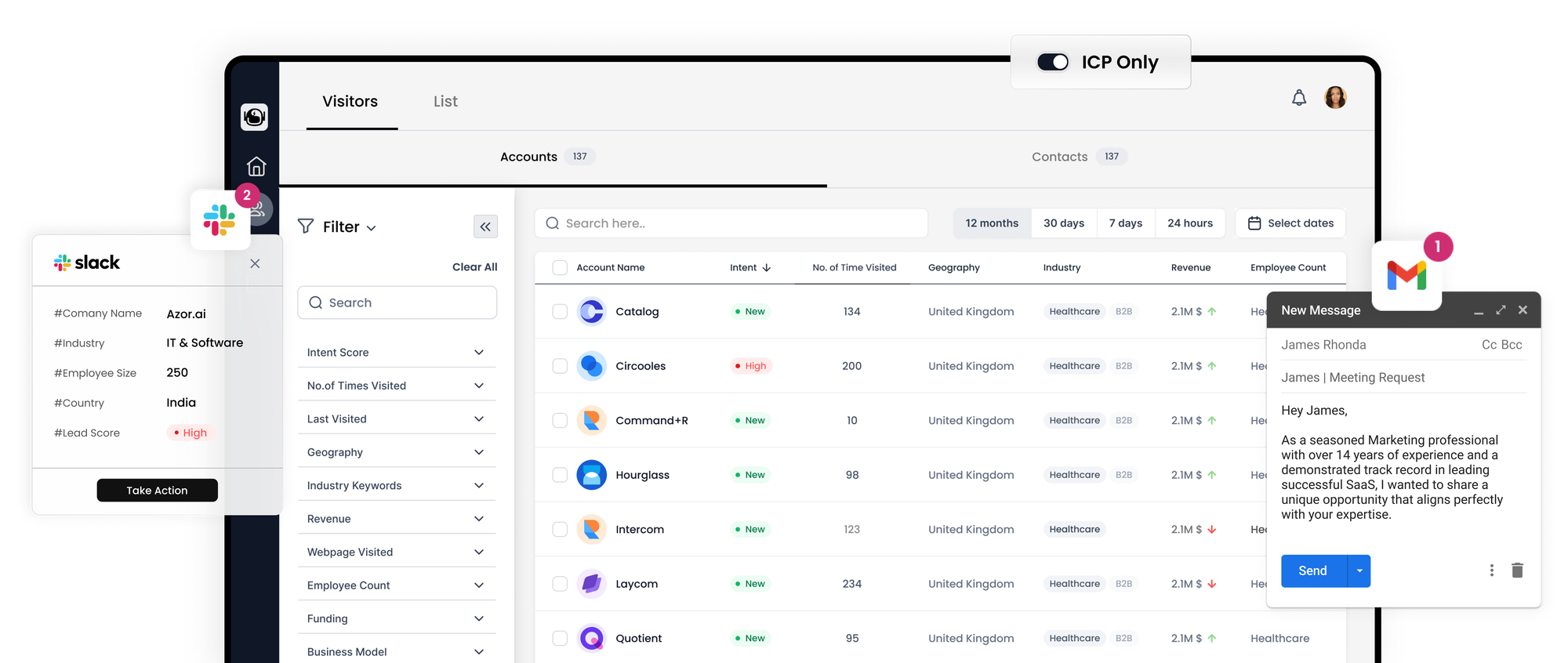Essential B2B Lead Generation Strategies for Maximizing ROI in 2023

In the realm of marketing, leads represent potential customers who show interest in your product or service. Lead generation is the pivotal process of attracting these prospects and converting them into customers. For businesses operating in the B2B sector, employing distinct lead generation strategies tailored to their specific needs is crucial for enhancing sales and optimizing resource utilization.
This comprehensive guide will delve into impactful B2B lead generation strategies designed to amplify your business's return on investment (ROI). Additionally, we'll explore the nuances of the B2B lead generation process and its inherent benefits.

Understanding B2B Lead Generation
B2B lead generation is about identifying and attracting other businesses to your products or services, ultimately converting them into clients and generating sales. This process often begins with collecting potential leads' information, such as names and email addresses, and serves as the foundational stage in a company’s marketing funnel or sales process.
The B2B Lead Generation Journey
Generating B2B leads involves several key steps, each crucial to the overall success of your marketing and sales efforts.
1. Identifying Potential B2B Sales Leads
- The journey starts with discovering potential B2B sales leads through various digital marketing strategies.
- The focus is on acquiring prospective customers’ contact details, which is vital for effective communication and lead nurturing.
2. Engaging with Potential Leads
- Following lead identification, the next step involves reaching out to these potential leads using the collected contact information.
- Communication methods include email outreach, phone calls, and responding to queries, aiming to evaluate lead quality and propel them further down the sales funnel.
3. Qualifying and Prospecting High-Quality Leads
- This stage involves assessing each lead to determine their potential as a customer.
- Leads are scored and categorized based on interest level and purchase intent, differentiating between sales-qualified leads (ready to buy) and marketing-qualified leads (interested but not yet ready to purchase).
4. Closing the Sale
- Finally, the marketer presents tailored solutions to match the client's needs, creating urgency and encouraging the lead to make a purchase.
- The approach to closing a sale varies depending on the lead's readiness and quality, with the ultimate goal of converting leads into paying customers.
Strategies for B2B Lead Generation
In the B2B sector, successful lead generation strategies can vary significantly depending on your business model and target audience. It's crucial to adapt and refine these strategies to align with your specific needs. Let's explore 20 effective B2B lead generation tactics that can help enhance your marketing and sales efforts.
1. Conduct A/B Testing for Campaigns
- Experiment with different versions of your website, especially landing pages, to determine which elements drive the most engagement.
- Apply A/B testing to email campaigns, focusing on variables like subject lines, content length, and sending times to optimize performance.
2. Optimize for Mobile Users
- With the majority of internet traffic coming from mobile devices, having a mobile-responsive website is essential.
- Ensure that lead magnets and forms are optimized for mobile users to enhance user experience and conversion rates.
3. Leverage Google Ads for Targeted Leads
- Use Google Ads for high-quality lead generation, focusing on relevant, high-intent keywords.
- Regularly monitor and adjust your ad campaigns for maximum efficiency and ROI.
4. Enhance Your Calls-to-Action (CTAs)
- Strategically place CTAs on your website to maximize visibility and engagement.
- Design CTAs that are visually appealing and convey a clear value proposition, while creating a sense of urgency.
5. Build Social Proof
- Increase trust and credibility by showcasing user reviews, business stats, and live sales notifications on your site.
- Utilize social media plugins to encourage content sharing, further enhancing your brand's reach and reputation.
6. Content Marketing
- Develop valuable, informative content that addresses your audience's needs and positions your brand as an industry leader.
- Use a variety of formats, including blogs, videos, and infographics, to engage and attract potential leads.
7. Email Marketing
- Create personalized email campaigns to nurture leads and keep your brand at the forefront of their minds.
- Segment your email list for targeted communication and higher engagement rates.
8. Social Media Marketing
- Utilize platforms like LinkedIn and Facebook for targeted advertising and community engagement.
- Regularly interact with your audience through posts, comments, and direct messaging.
9. SEO and SEM
- Optimize your website for search engines to attract organic traffic.
- Invest in search engine marketing for more immediate lead generation results.
10. Host Webinars and Virtual Events
- Use webinars to educate potential clients and generate leads, offering unique insights and expert knowledge.
- Engage with attendees through interactive elements like Q&A sessions and polls.
11. Referral Programs
- Encourage current customers to refer new leads through incentives and rewards.
- Create a structured referral program that is easy to participate in and offers tangible benefits.
12. Account-Based Marketing (ABM)
- Tailor your marketing efforts to target specific, high-value accounts.
- Develop personalized campaigns and content to engage these targeted accounts effectively.
13. Influencer Partnerships
- Collaborate with industry influencers to expand your brand’s reach and credibility.
- Leverage their audience to introduce your brand to potential leads.
14. Data-Driven Analytics
- Regularly analyze your lead generation data to identify trends and areas for improvement.
- Use insights from analytics to refine your strategies and increase effectiveness.
15. Networking and Partnerships
- Engage in networking opportunities to establish connections with potential leads.
- Form strategic partnerships with other businesses to expand your reach and referral base.
16. Online Directories and Listings
- List your business on relevant online directories to increase visibility.
- Ensure your listings are up-to-date and accurately represent your brand.
17. Community Engagement and CSR
- Participate in community events and corporate social responsibility (CSR) initiatives to showcase your brand values.
- Use these engagements to build relationships and enhance your brand image.
18. Lead Nurturing Programs
- Develop programs to nurture leads through the sales funnel, providing relevant information and touchpoints.
- Customize the nurturing process based on lead behavior and interaction history.
19. Customer Feedback and Testimonials
- Collect and showcase customer feedback and testimonials to build trust and credibility.
- Use positive reviews in your marketing materials and on your website.
20. Offer Free Trials or Demos
- Provide potential customers with free trials or demos of your product or service.
- Use these opportunities to demonstrate value and encourage conversion into paying customers.
By integrating these diverse strategies into your B2B lead generation plan, you can enhance your company's ROI and drive sustainable business growth. Remember, the key is to remain adaptable and responsive to market trends and customer behavior, continuously refining your approach for optimal
Conclusion
Effective B2B lead generation is a multifaceted endeavor requiring a strategic approach tailored to your business’s unique needs and goals. By implementing a combination of these strategies, businesses can not only generate high-quality leads but also nurture them effectively through the sales funnel, resulting in improved sales performance and maximized ROI.
